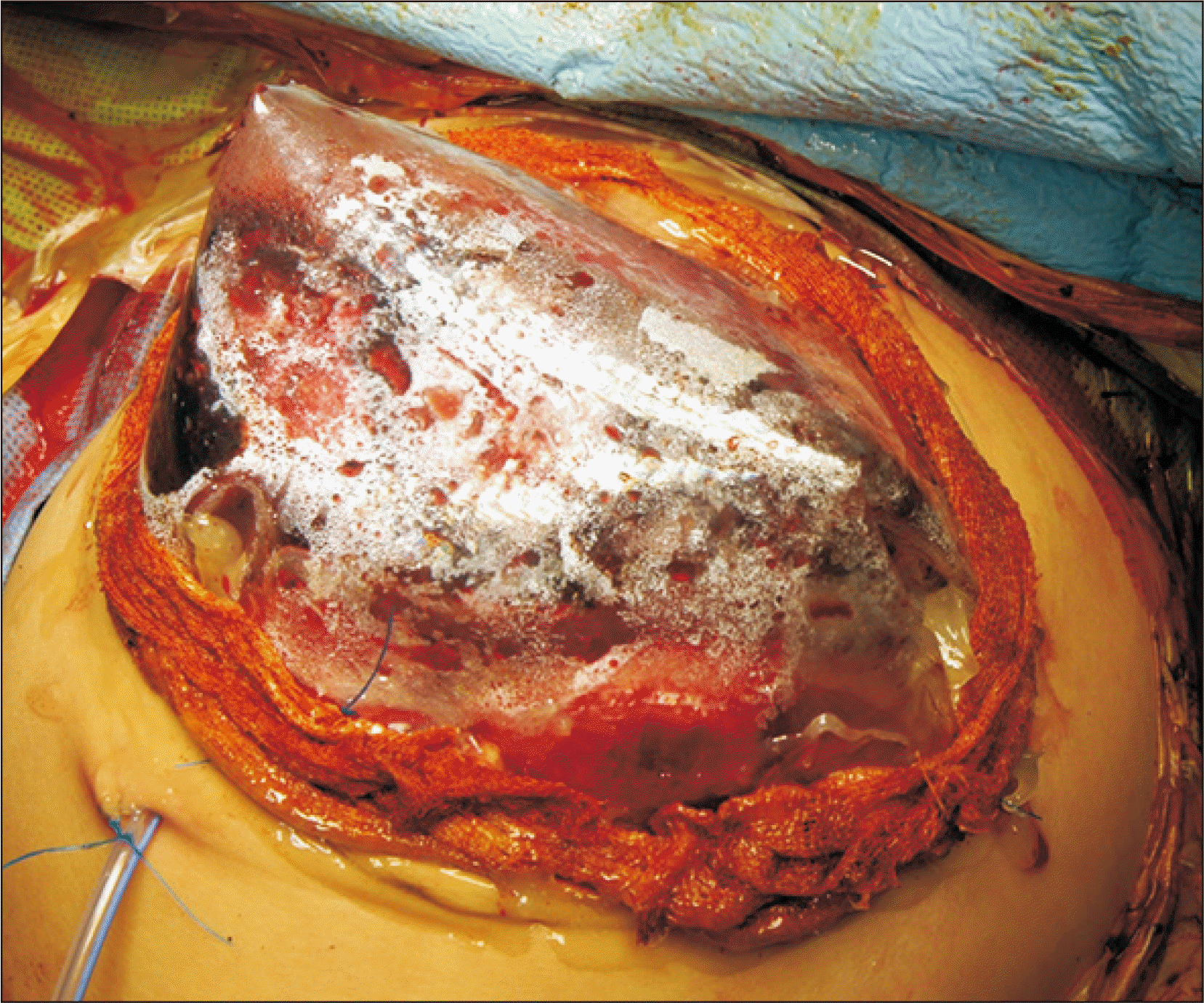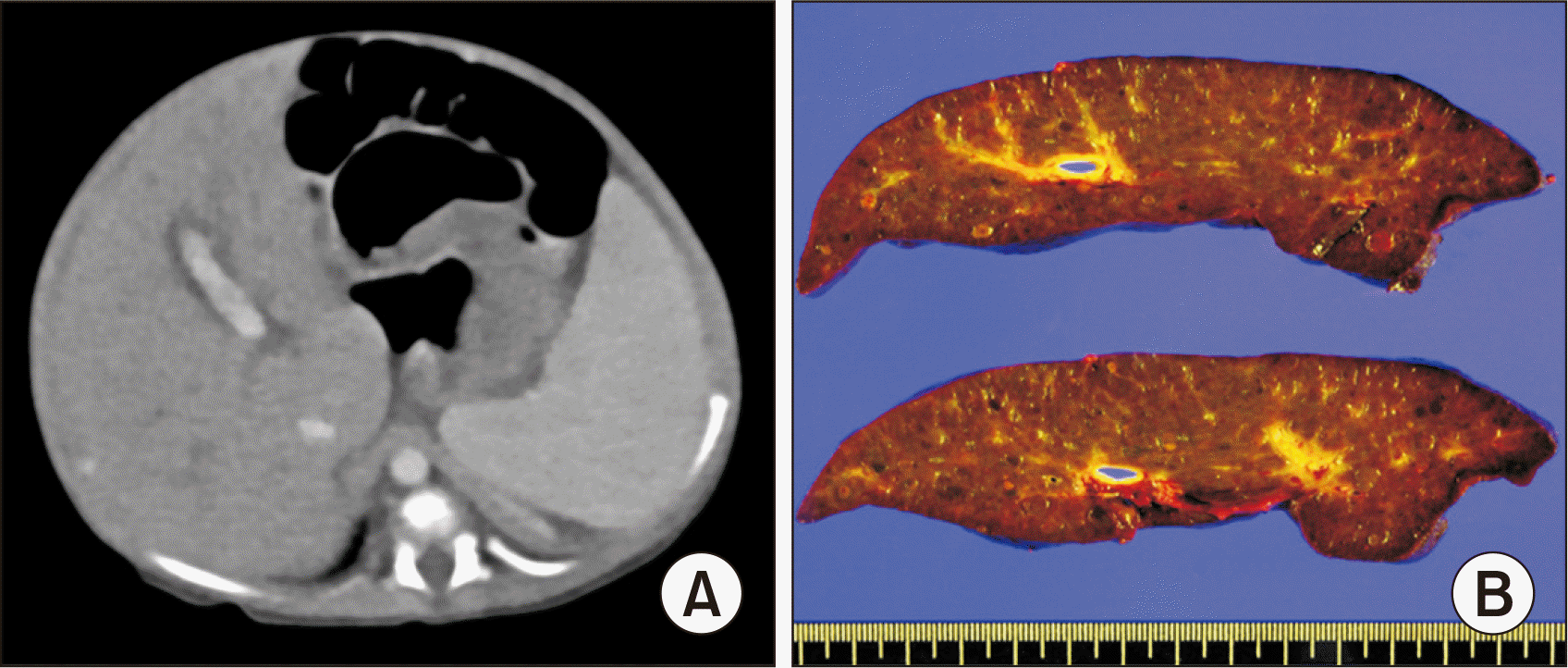1. Kanazawa H, Sakamoto S, Fukuda A, Uchida H, Hamano I, Shigeta T, et al. 2013; Living-donor liver transplantation with hyperreduced left lateral segment grafts: a single-center experience. Transplantation. 95:750–4. DOI:
10.1097/TP.0b013e31827a93b4. PMID:
23503505.
2. Shehata MR, Yagi S, Okamura Y, Iida T, Hori T, Yoshizawa A, et al. 2012; Pediatric liver transplantation using reduced and hyper-reduced left lateral segment grafts: a 10-year single-center experience. Am J Transplant. 12:3406–13. DOI:
10.1111/j.1600-6143.2012.04268.x. PMID:
22994696.

3. Ardiles V, Ciardullo MA, D'Agostino D, Pekolj J, Mattera FJ, Boldrini GH, et al. 2013; Transplantation with hyper-reduced liver grafts in children under 10 kg of weight. Langenbecks Arch Surg. 398:79–85. DOI:
10.1007/s00423-012-1020-y. PMID:
23093088.
4. Thomas N, Thomas G, Verran D, Stormon M, O'Loughlin E, Shun A. 2010; Liver transplantation in children with hyper-reduced grafts: a single-center experience. Pediatr Transplant. 14:426–30. DOI:
10.1111/j.1399-3046.2010.01294.x. PMID:
20214746.
5. Yamada N, Sanada Y, Hirata Y, Okada N, Wakiya T, Ihara Y, et al. 2015; Selection of living donor liver grafts for patients weighing 6kg or less. Liver Transpl. 21:233–8. DOI:
10.1002/lt.24048. PMID:
25422258.

6. Sakuma Y, Sasanuma H, Miki A, Shimizu A, Sata N, Yasuda Y, et al. 2016; Living-donor liver transplantation using segment 2 monosegment graft: a single-center experience. Transplant Proc. 48:1110–4. DOI:
10.1016/j.transproceed.2015.12.119. PMID:
27320568.

7. Hong SK, Suh KS, Kim HS, Yoon KC, Ahn SW, Kim H, et al. 2018; Pediatric living donor liver transplantation using a monosegment procured by pure 3D laparoscopic left lateral sectionectomy and in situ reduction. J Gastrointest Surg. 22:1135–6. DOI:
10.1007/s11605-018-3705-1. PMID:
29435902.

8. Srinivasan P, Vilca-Melendez H, Muiesan P, Prachalias A, Heaton ND, Rela M. 1999; Liver transplantation with monosegments. Surgery. 126:10–2. DOI:
10.1067/msy.1999.98686. PMID:
10418586.

9. Kiuchi T, Kasahara M, Uryuhara K, Inomata Y, Uemoto S, Asonuma K, et al. 1999; Impact of graft size mismatching on graft prognosis in liver transplantation from living donors. Transplantation. 67:321–7. DOI:
10.1097/00007890-199901270-00024. PMID:
10075602.
10. Kasahara M, Fukuda A, Yokoyama S, Sato S, Tanaka H, Kuroda T, et al. 2008; Living donor liver transplantation with hyperreduced left lateral segments. J Pediatr Surg. 43:1575–8. DOI:
10.1016/j.jpedsurg.2008.02.056. PMID:
18675660.

12. Raices M, Czerwonko ME, Ardiles V, Boldrini G, D'Agostino D, Marcó Del Pont J, et al. 2019; Short- and long-term outcomes after live-donor transplantation with hyper-reduced liver grafts in low-weight pediatric recipients. J Gastrointest Surg. 23:2411–20. DOI:
10.1007/s11605-019-04188-y. PMID:
30887299.

13. Houssin D, Soubrane O, Boillot O, Dousset B, Ozier Y, Devictor D, et al. 1992; Orthotopic liver transplantation with a reduced-size graft: an ideal compromise in pediatrics? Surgery. 111:532–42. PMID:
1598673.
14. Sakamoto S, Kanazawa H, Shigeta T, Uchida H, Sasaki K, Hamano I, et al. 2014; Technical considerations of living donor hepatectomy of segment 2 grafts for infants. Surgery. 156:1232–7. DOI:
10.1016/j.surg.2014.05.003. PMID:
24909347.

15. Hwang S, Kim KH, Kim DY, Kim KM, Ahn CS, Moon DB, et al. 2013; Anomalous hepatic vein anatomy of left lateral section grafts and customized unification venoplasty for pediatric living donor liver transplantation. Liver Transpl. 19:184–90. DOI:
10.1002/lt.23557. PMID:
23045153.








 PDF
PDF Citation
Citation Print
Print






 XML Download
XML Download